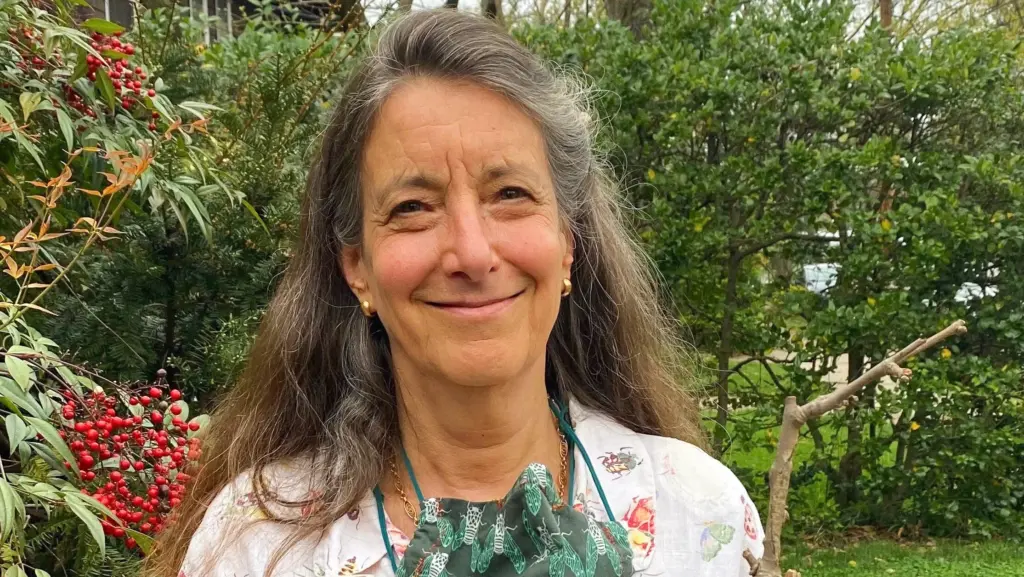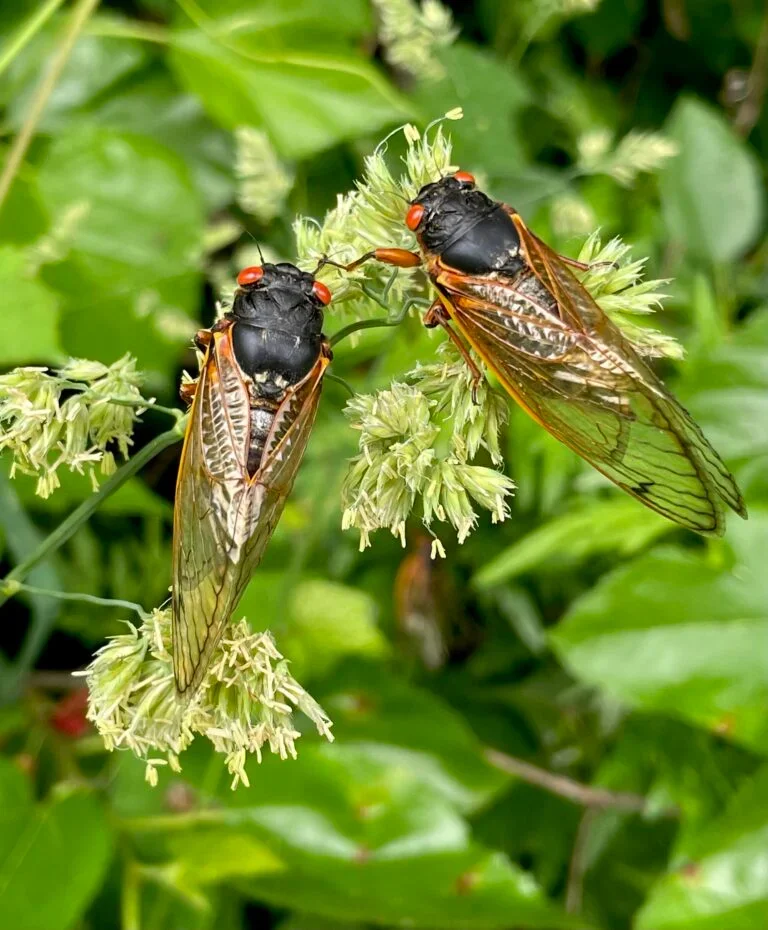Insect Feast: New Paper from Georgetown Professor Explores the World of Cicadas

Martha Weiss, a professor in the Department of Biology
New research from College of Arts & Sciences professor Martha Weiss provides an unprecedented look into the curious and wonderful world of cicadas.
“Once every 13 or 17 years, depending on your location in the eastern United States, a brood of periodical cicadas emerges from their underground burrows, molts to adulthood, raucously mates and lays eggs that will become the next generation of cicadas,” explained Weiss. “The emergence provides a massive pulse of insect food to a diverse array of consumers that readily incorporate the cicadas into their diets.”
Published in Science, her recent paper examines how Brood X, the largest of 12 cicada populations that are on a 17-year cycle, affected forest ecosystems in 2021.
Feasting on Cicadas

Two cicadas of Brood X observed by the researchers.
“Our results demonstrate the pervasive ecological impacts of periodical cicadas on species interactions and patterns of energy flow in the eastern forests of North America,” said Weiss, a professor in the Department of Biology. “Although they only make an above-ground appearance once in a generation, there is typically at least one brood appearing somewhere in this vast region every spring – and each time they appear, these insects rewire forest food webs and leave behind an ecological footprint on the landscape.”
Weiss partnered with John Lill, a professor at George Washington University, and additional researchers from his institution and the University of Maryland, College Park to study how birds in temperate forests altered their diets when hordes of new insects seemingly sprout from the ground.
“We wanted to see whether the birds that ordinarily ate the forest caterpillars that we have studied would switch over to the novel prey when a gigantic pulse of insect food appeared in the forest, and if so, what the consequences would be for the rest of the forest food web,” said Weiss.
Weiss and Lill, longtime collaborators studying insect populations in oak forests throughout the East Coast, were intrigued by how cicadas may impact those same populations. The team drew on 983 observations from bird enthusiasts in the Mid-Atlantic region, forming a large-scale view of bird-cicada interactions across Brood X’s habitat. The team documented more than 80 species of birds, including many that don’t regularly consume insects as a primary food source.
“During the emergence, more than half of all foraging bouts of birds we observed involved cicadas,” said Weiss. “Because these birds were mainly eating cicadas, their predation rate on caterpillars decreased dramatically, doubling both the abundance of caterpillars on understory oak trees and the amount of leaf tissue they consumed and disrupting the patterns of energy flow in forest ecosystems.”
A Sentiment for Cicadas
For Weiss, studying Brood X was a goal nearly two decades in the making.
“Coming from California, I had never had the pleasure of experiencing a periodical cicada emergence until 2004, when Brood X made its last appearance above ground in Washington, DC,” recounted Weiss. “I was of course enchanted, and resolved that if I were still here 17 years hence, I’d find a way to study these amazing creatures.”
As Brood X’s re-emergence approach, Weiss and her collaborators committed to more than just studying the insects – they sought to educate local youth who would be experiencing cicadas for the first time.
“We thought that the cicada emergence was an amazing, once-in-a-generation opportunity to teach kids about insects, and to help tip the balance ‘from fear to fascination,’ as our environmental education collaborator Diane Lill puts it,” said Weiss.
And the team isn’t done studying cicadas – they will be traveling to Chicago in 2024 to observe a double emergence of both a 13-year and 17-year brood of cicadas.